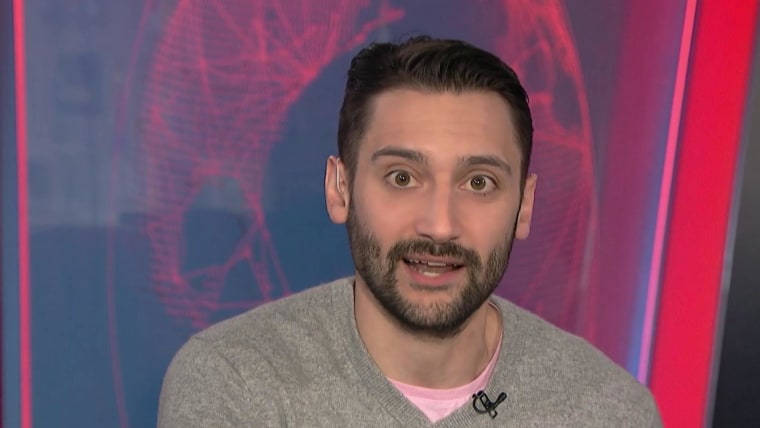A video of Joe Biden that was deceptively edited to make it appear as if he endorsed President Donald Trump for re-election triggered warning labels from Twitter and Facebook, one of the first instances in which new policies meant to curb misinformation have been applied to the Trump campaign.
The video, which was tweeted Saturday by White House social media director Dan Scavino and later retweeted from Trump’s account, shows Biden claiming “we can only re-elect Donald Trump,” before the audio stops and video fades out.
In the full clip, Biden says “we can only re-elect Donald Trump if in fact we get engaged in this circular firing squad here. It’s gotta be a positive campaign.” The clip was taken from Biden’s speech in Kansas City earlier on Saturday.
While the labels are the newest indication that Facebook and Twitter are beginning to take action on their policies around misinformation, the spread of the video shows how even clear warnings can be little match for the power of the social media infrastructure that has been built up by both parties in recent years.
The labels are also already at risk of taking on a political tinge, according to Joan Donovan, director of the Technology and Social Change Research Project at Harvard University’s Shorenstein Center.
“Some in the right wing considered the label a badge of honor,” Donovan said. “It is being rolled into the larger narrative about conservatives being silenced by social media companies.”
Byers Market Newsletter
Get breaking news and insider analysis on the rapidly changing world of media and technology right to your inbox.
The manipulated video was first tweeted by a conservative meme account two hours before Scavino’s tweet, along with the caption “How is this real?” That post received more than 7,000 retweets.
The clip is what information researchers refer to as a “cheap fake,” a piece of content that’s been sped up, slowed down, cut off or easily edited in a way that deceptively strips it of content or changes the meaning.
Twitter users reported Scavino’s misleading tweet en masse on Saturday, which flagged Twitter’s site integrity team. Users employed the new reporting function, which allows tweets that are considered to be “misleading about a political election” to be flagged to Twitter’s moderation staff for a potential takedown.
The site integrity team quickly decided the video, which flipped the meaning of Biden’s statement by cutting it off prematurely, broke Twitter’s manipulated content rules, which went into place on March 5.
The clip originated from @thebradfordfile, a user known to boost pro-Trump conspiracy theories and conservative talking points. After it was shared by the White House, it was viewed on Twitter at least 6.4 million times and on Facebook more than 1 million times, according to the social media tracking tool Crowdtangle. It was further disseminated to millions more across social media by well-known Trump supporters, including Charlie Kirk, leader of the conservative group Turning Point USA.
Facebook labelled the video on Monday with a more prominent screen that obscured the content, describing it as “partly false information.” Per its policy, Facebook’s label was only triggered after Lead Stories, one of its partner fact-checking organizations, identified the video as misleading.
A Facebook spokesperson said in an emailed statement that the company was now reducing the video’s distribution and including a warning label for people who try to share it.
But Facebook’s actions were too slow, according to Biden’s campaign manager, Greg Schultz, who criticized Facebook’s inaction in a statement that called the company’s “malfeasance when it comes to trafficking in blatantly false information” a “national crisis.”
The complaints from Biden’s campaign mirror those from other Democratic politicians, including House Speaker Nancy Pelosi’s chief of staff, who in February called out Facebook for failing to act on a video that was edited to repeatedly show Pelosi tearing up the president’s State of the Union speech as he honored guests in the gallery. Former Democratic presidential candidate Michael Bloomberg was also accused of creating “doctored” content, with a video ad that appeared to show him stumping his rivals at a debate when no such moment occurred.
Donovan, of the Shorenstein Center, said that putting labels on videos won’t change the growing problem of misinformation.
“When it comes to the question of manipulated video content, there needs to be sanctions for actual users beyond the label,” she said.
Some conservatives claimed that the labels were misapplied and that the video was part of normal political speech.
“We’re seeing an intentional and coordinated effort by established gatekeepers to equate political speech they don’t like with the entirely separate categories of doctored deep fakes, illegal content and deceptive cheap fakes,” tweeted Brendan Carr, a Republican commissioner on the Federal Communications Commission.
Emmanuelle Saliba contributed.













